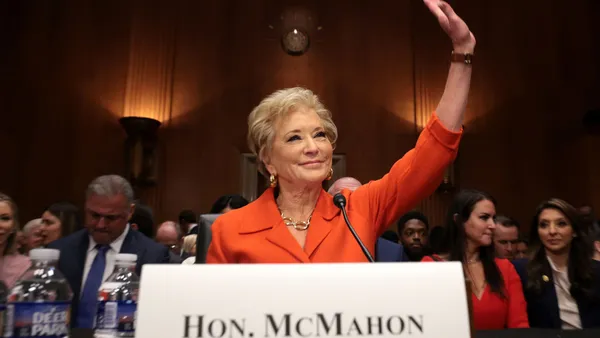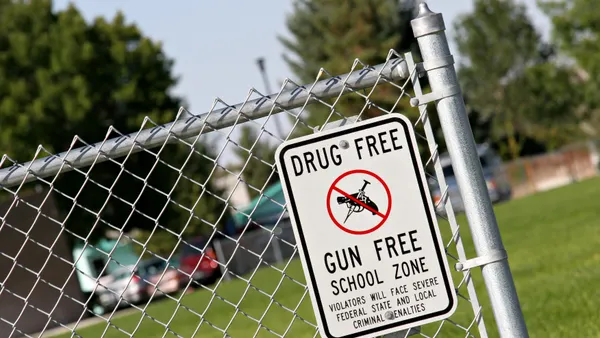Tender-age children are suffering trauma since crossing America's border without their families. Toddlers are appearing alone in immigration courts. Infants in federal shelters aren't seeing their moms or dads for months at a time.¹ Preschool-age children, who have no idea where their parents could be, are wailing and acting out.² Some have marks on their arms suggesting self-harm. Others suffer from panic attacks so severe that their hands constrict into balls and their small bodies shake.³
"Their suffering is unlike anything I have ever dealt with," said a Montessori teacher who's used to weeping children. "Often in those first few weeks of the school year, children cried for their parents. My colleagues came armed with training in psychology and child development, with songs, books, and words of reassurance. But my youngest students' temporary discomfort pales in comparison to the anguish of the children who have been ripped from their parents."⁴
The Biden White House is now trying to reunite these families, and the Council for Professional Recognition supports its efforts. "As early childhood educators, we are steadfast in our call to ‘do no harm to a child," said Council CEO Dr. Calvin E. Moore, Jr. "As American citizens, we take responsibility to uphold basic rights and humane treatment for all children and families. We look forward to a time when all these families can be reunited."⁵
But that won't undo all the damage, warned an educator in Tijuana. "These kids have seen things no child should see. They've been stripped of their homelands. They've left their families behind. They've been stuffed in trunks and crossed over borders. Do you think we're going to deliver them to a kindergarten in the U.S. and it's going to go well? Not necessarily so," she pointed out since the separation of parents and children makes a lasting impact.⁶
"The trauma of a forced or sudden separation from parents—either at the border or much earlier in their journey—can put children at risk of toxic stress," said Jack P. Shonkoff, director of the Center on the Developing Child at Harvard University "First, healthy brain development in babies and young children requires the consistent availability of a responsive and supportive relationship with at least one parent or caregiver. Second, high levels of stress can disrupt the architecture of the developing brain and other biological systems with serious, negative impacts on learning, behavior and lifelong physical and mental health."⁷
The crisis at the border has put a spotlight on early childhood trauma. But the problem isn't new, as the Council points out in its white paper Strangers in a Strange Land. We've heard enough horror stories over the years to grasp how diverse, traumatic experiences affect the young as they try to adjust to new countries. Young Bosnian Muslim refugees endured war, genocide and organized rape of their moms. Sudanese refugees survived starvation, attacks by lions, near-drowning in crocodile-infested rivers and long treks across deserts with little food or water. Afghanistan refugee children watched their parents being murdered. Croatian children went through horrific trials before coming to the United States: loss of home and personal belongings, exposure to enemy attacks and death of a family member or friend.⁸
Decades of working with children who've gone through these ordeals suggest that the current crisis will test the early childhood profession. If and when the children rejoin their parents, we will often be handing traumatized children over to traumatized parents since many families went through trauma at home and on the journey here. The children and their families will be confused by what has happened to them, terrified of what might happen next.⁹ And they'll bring these fears to early childhood settings, so teachers will need to work hard to gain their trust.
Families have confidence in teachers who come from their community and speak their language. So, promoting the diversity of the early childhood workforce is an important aspect of providing service for children from different backgrounds. Children's basic language skills and identities are formed during their earliest years. And educators who share children's cultures can provide the continuity between home and early learning centers that lead to meaningful engagement with families.10
Besides sharing language and traditions, educators must know how to improve the children's performance in school, especially since many immigrant children have missed long stretches of schooling. To help the children catch up, immigrant teachers need more opportunities for training. So far, they've faced roadblocks like the lack of accessible programs that integrate English language learning, adult education and early childhood education.11
One answer to this unfilled need is the Council's Child Development Associate® (CDA), a credential geared to the cultures of children and families worldwide. In 2008, the Council published the first edition of its textbooks in Spanish. Since then, it has gone on to work with educators in 24 languages. And it has ramped up its efforts to reach more diverse groups of young learners as new waves of immigration from Africa, Asia and the Arab world changed the demography of our nation.12
Whatever language children speak or wherever they come from, early childhood programs can take steps to make the children feel more secure. Programs can work with immigrant services to reduce parents' stress and help them make a safe, nurturing home. Child care directors can develop sensitivity training so all staff know how to build bridges that help children and parents feel less like strangers in a strange land.13 And educators should keep one thought foremost in their minds as they confront the crisis at the border: These tender-age children can't recover from the trauma they've been through without tender, loving care.
[1] Jervis, Rick. June 14, 2021. “Biden White House Grapples with Challenges of Young Children Arriving Without Parents at US Border.” USA TODAY, URL
[2] Burke, Garance and Martha Mendoza. June 29, 2018. “Immigrant Babies, Young Children Held in 'Tender Age' shelters, AP Reports.” USA TODAY, URL
[3] Watson, Julie, Amy Taxin and Adriana Gomez Licon. June 14, 2021. “Panic Attacks Highlight Stress at Shelters for Migrant Kids. AP, URL
[4] Facciolo, Samantha. June 22, 2018. “I Teach Kids Who Were Separated from Their Parents. Here's How They Cope.” Marie Claire, URL
[5] Mohamed Usma. April 19, 2021. “Council for Professional Recognition Concerned for the Well-Being of Children Arriving Without Parents in the United States.” Council for Professional Recognition, URL
[6] Khokha, Sasha. November 5, 2019. “Youngest Migrants in Tijuana Find a Safe Space for Learning at the Nest.” The World, URL
[7] Shafer, Leah and Bari Walsh. July 19, 2018. “Migration, Separation and Trauma.” Harvard Graduate School of Education, URL
[8] Strekalova, Ekaterina and James L. Hoot. Fall 2008. “What is Special About Special Needs of Refugee Children?” Multicultural Education, URL
[9] Kathy Hirsh-Pasek. July 9, 2018. “The Enormous Cost of Toxic Stress: Repairing Damage to Refugee and Separated Children.” Brookings, URL
[10] Park, Maki, Margie McHugh, Jie Zong and Jeanne Batalova. April 2015. “Immigrant and Refugee Workers in the Early Childhood Field.” Migration Policy Institute, URL
[11] Ibid.
[12] Moore, Calvin E., Jr. July 24, 2020. “Facing Challenges and Change: 45 Years of the CDA.” Council for Professional recognition, URL
[13] Shafer, Leah and Bari Walsh. July 19, 2018.








 Dive Awards
Dive Awards



